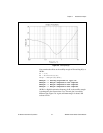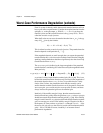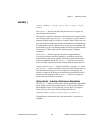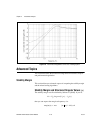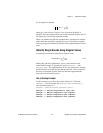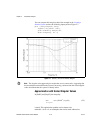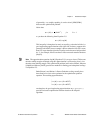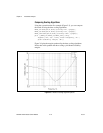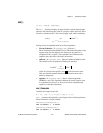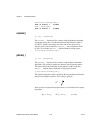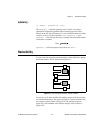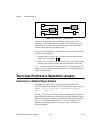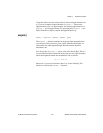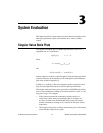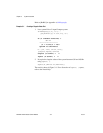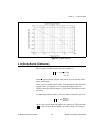
Chapter 2 Robustness Analysis
© National Instruments Corporation 2-15 MATRIXx Xmath Robust Control Module
ssv( )
[v,vD] = SSV(M, {scaling})
The ssv( ) function computes an approximation (and guaranteed upper
bound) to the Scaled Singular Value of a complex square matrix M, where
M can be a reducible matrix. The scaled singular value v(M) is defined by:
Scaling can be accomplished with one of three algorithms:
• Perron-Frobenius—If
{scaling="PF"} Safonov’s
Perron-Frobenius method [Saf82] is used. This method finds the scaled
singular value for non-negative real matrices M. In general, it is
suboptimal if M is complex. This algorithm is the default because
empirical tests show that is the fastest of the three.
• Osborne—If
{scaling="OS"}, Osborne’s Method [Osb60] is used.
This method solves the problem of finding D
O
such that
where D is diagonal and positive, and is the Frobenius norm.
Thus, the Osborne method minimizes the Frobenius norm, and is
therefore suboptimal.
• Optimal—If
{scaling="OPT"}, Boyd’s ellipsoid algorithm
[BYB89] is used. This algorithm computes the scaled singular value
to a guaranteed accuracy. It is, however, the most computationally
expensive of the three algorithms.
ssv( ) Examples
Consider the complex matrix M:
M = [–1, jay, 0; 0, 2*jay, 1+jay;1, 0, 1];
ssv( ) can return the optimally scaled singular value of M using Osborne,
Perron-Frobenius, or Boyd methods:
VOS=ssv(M,{scaling="OS"})
VOS (a scalar) = 2.56723
VPF=ssv(M,{scaling="PF"})
VPF (a scalar) = 2.45133
vM()= inf σ DMD
1–
()
DC
nn×
∈ det D() 0 dia,≠, gonal
D
O
MD
O
1–
inf
D diagonal
DMD
1–
F
⋅
F



